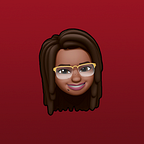Accessibility, Mentorship and Design
This post was originally published in December of 2015.
One day in June, amidst an avid search for a new job, I received a phone call from a woman named Michelle C. about a position I’d previously applied for with MSU IT Services. Instantly, I was confused…I hadn’t remembered ever applying for the position. The only thing I knew was that I’d been looking for a better job, so it was a possibility that I had just forgotten about it. Nonetheless, I completed the screening over the phone and got set up for a second phone interview with the director Nate Evans who, at the time, was on vacation.
Following a brief game of phone tag, we finally got to speak about the position as a Student Universal Design Assistant. Nate explained that the position would allow me to put to use all of the previous design and communications experience that I’d already had, as well as learning the concept of web accessibility to add to my web design skills. I was super excited!
After the interview, later that day, I received an email from Nate offering me the position starting the following month.
Now I’ve been dabbling in web design since I first learned to hand code HTML in Notepad back in 2007. Between my first encounter with the World Wide Web and now, the standards that we follow when designing and developing web content have continuously changed to adapt to the ultimate user experience. Among these updated changes was an increased buzz around the concept of Web Accessibility and it’s importance in web practices. The W3C’s definition says:
“Web accessibility means that people with disabilities can use the Web. More specifically, Web accessibility means that people with disabilities can perceive, understand, navigate, and interact with the Web, and that they can contribute to the Web. Web accessibility also benefits others, including older people with changing abilities due to aging.”
After interviewing with Nate and doing a little research of my own on what it is that I was going to be doing, I was excited to have the opportunity to add the knowledge of web accessibility to my skillset. I couldn’t wait to start working!
My first few days on the job were like any other…boring instructional videos and struggling to get all of my information set up in time for me to get started. That was followed by a brief introduction to the concept of web accessibility and the role it would play in daily work, and a walk-thru, given by an employee at the time, to show the process to make a course’s content meet the WCAG (Web Content Accessibility Guidelines) 2.0 AA standards that Michigan State University follows.
Once I was all set up and ready to go at work, I was given first dibs at picking my computer (Windows vs. Mac) and workstation. The geek in me was elated! It was no question that I’d wanted to use a Mac…Mac beats Windows every time if I have to choose. After briefly reviewing my options, I got the two newer flatscreen HP widescreen monitors and the Mac mini with Apple accessories at my own workstation.(Although I love the idea of teamwork, it’s nothing like having your own space!)
After a week of training and getting acquainted with my new position, I was ready to get started! As I dove into the duties of my new position, to start I was able to work with a team member to edit the content of a course with over 250 documents and several photos to caption. After my first course, I took on several solo courses, delivered a presentation on accessibility with a coworker at the 2015 Making Learning Accessible Conference (a 2-day Advance Accessibility training by WebAim), my first design project experience with badging (a digital representation of an accomplishment, achievement or skill acquisition — kind of like boy/girl scout badges), assisting with the creation of the MSU Hub for Innovation and Learning Technology and even some web editing.
But the work — meaningful as it was — was only a small part of what made my experience so special. Everyone I met, from administration to Nate Evans himself, helped me grow, both as an employee and a person. My supervisors talked with me about my ambitions, hopes, and struggles regularly, not because they felt obligated, but because they truly cared. Their dedication to their jobs and their fellow employees is something I will never forget.
I really appreciated the amount of freedom that Nate gave to me. He would designate a specific task to me and then allow me to complete it on my own while offering the help I needed when necessary. I was able to strengthen my web skills, design skills, and my overall accessibility knowledge. It was also very exciting to be involved with their new Wine Tour app. I enjoyed helping with data entry and writing promotional material about its release.
I will take away many invaluable lessons from this position, and I am grateful to have had so many wonderful opportunities for growth and learning with patient guides to help me through the process. Whatever the future may bring, I will look back on my time at Wills House with fond memories of my time spent there and thankfulness for the knowledge that I have gained.
View some of the work I did:
Desire to Learn Accessibility: D2L and Accessibility
by: Jojo Otchere & Desiree’ Slaughter
http://bit.ly/MLAPres
MSU AAAS eSankofa Adinkra Badges
http://bit.ly/2mxq6Mg
